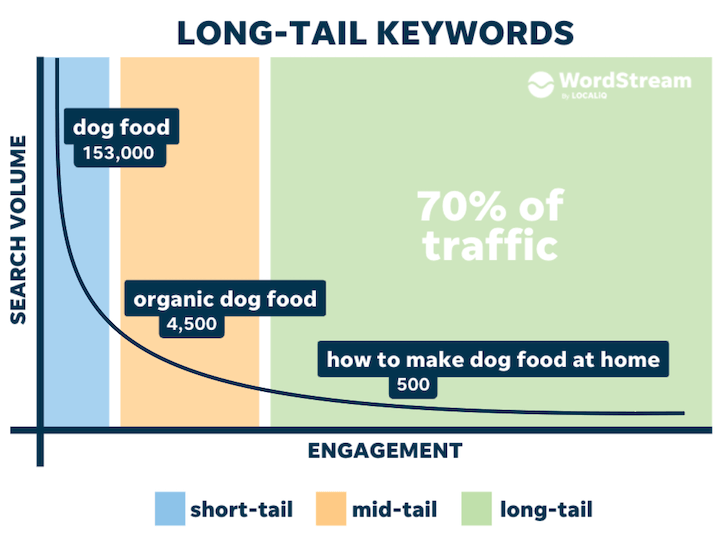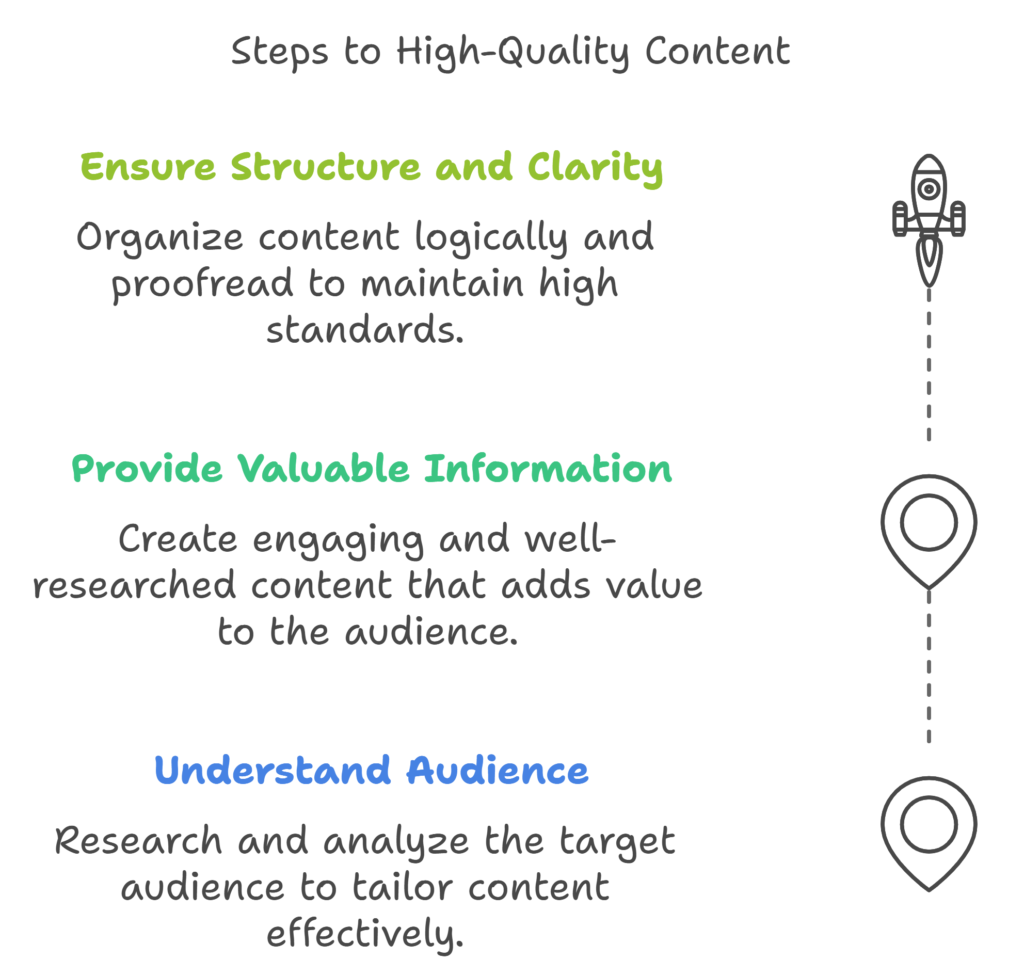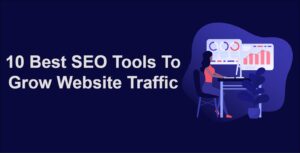Tired of watching your competitors dominate the first page of Google? It’s time to take control of your online visibility and boost your search engine rankings.
In this comprehensive guide, we’ll delve into the strategies and tactics to help you rank higher for your target keywords like “how to rank for a keyword,” “SEO best practices,” and “keyword research tools.” Let’s embark on a journey to unlock the secrets of SEO success and drive more organic traffic to your website.
How to do Keyword Research
Essential Concepts
- Focus Keyword: The primary word or phrase you want a specific page to rank for in search engines. This is determined through keyword research.
- Long-Tail Keywords: These are more specific phrases that typically have lower search volumes but less competition, making them easier to rank for. They often lead to higher conversion rates due to their specificity.
- Keyword Strategy: This involves decisions based on your keyword research, such as which content to create and how to optimize it.
Steps for Effective Keyword Research
- Define Your Goals: Understand your business mission and target audience. Identify what problems your products or services solve.
- Brainstorm Keywords: Generate a list of potential keywords related to your business, including broad and location-based terms.
- Analyze Competitors: Examine the keywords that competitors are targeting. This helps identify gaps and opportunities in your own keyword strategy.
- Use Keyword Research Tools: Utilize tools like Google Keyword Planner, SEMrush, or Ahrefs to gather data on search volume, competition, and trends for your keywords.
- Focus on Long-Tail Variants: Prioritize long-tail keywords that are relevant to your niche, as they tend to have less competition and higher conversion potential.
- Evaluate Search Intent: Understand the intent behind the keywords (informational, navigational, transactional) to ensure your content aligns with user expectations.
- Create a Keyword List: Organize your keywords in a spreadsheet, categorizing them by relevance, search volume, and competition level.
How to Rank for a Keyword (Step by Step)
Ranking keywords in Google search results is a multifaceted process that depends on various factors.
Here are some key factors that influence keyword rankings in Google:
- On-Page Optimization
- Page loading
- keyword relevance or Search intent
- Search volume
- Quality of the content
- Number of backlinks
- Domain authority
Step 1: Improve Your On-Site and Technical SEO
Website loading time
It doesn’t matter what platform you use for your website or which theme you are using. Your website loading time decides your SEO rankings. Google gives top priority to sites that load faster.
Google focuses on providing search results with a great user experience. That said, it places the web pages in first page results that load quickly.
On-Site and Technical SEO are essential for optimizing a website’s performance in search engines. On-site SEO focuses on content, user experience, and on-page elements. At the same time, Technical SEO deals with the website’s technical infrastructure, ensuring search engines can crawl and index the site effectively.
| Aspect | On-Site SEO | Technical SEO |
|---|---|---|
| Keyword Optimization | – Keyword research and selection | – XML sitemap |
| – Keyword placement in content | – Robots.txt file | |
| – Title tags and meta descriptions | – Canonical tags | |
| – Header tags (H1, H2, etc.) | – Redirects (301, 302) | |
| Content Quality | – High-quality, informative content | – Crawlability and indexability |
| – Unique and engaging content | – HTML and XML sitemaps | |
| – Content relevance to user intent | – Site structure and navigation | |
| – Avoidance of duplicate content | – HTTP vs. HTTPS | |
| User Experience | – Mobile responsiveness | – Site speed and performance |
| – Page load times | – Mobile-friendliness | |
| – Website structure and navigation | – Structured data markup | |
| Internal Linking | – Internal linking for user navigation | – XML sitemaps |
| – Anchor text optimization | – Canonicalization | |
| – SEO-friendly URLs | – Website security and SSL | |
| Images and Multimedia | – Image optimization (ALT tags, file size) | – Image optimization |
| – Multimedia (videos, infographics) | – Video and multimedia optimization | |
| Social Integration | – Social sharing buttons | – Social media markup |
| – Rich snippets for social media sharing | – Social media integration | |
| Local SEO | – Local keywords and citations | – Google My Business optimization |
| – NAP consistency | – Local citations and directories | |
| – Google My Business profile | – Schema markup for local SEO | |
| Content Updates | – Regular content updates | – XML sitemaps |
| – Fresh, up-to-date information | – Crawl budget optimization | |
| – Blog posts and news sections | – Regular content updates | |
| User Intent | – Content aligned with user intent | – Understanding user intent |
| – Satisfying user search queries | – Providing relevant content | |
| – Clear call-to-action (CTA) | – User-friendly navigation | |
| Structured Data | – Schema markup for rich snippets | – Structured data markup |
| – Structured data for products, events, etc. | – Data markup for rich snippets |
Step 2: Keyword research Start Using Long Tail Keywords
Start with long-tail keywords on your blog posts to rank your keyword quickly. Long-tail keywords are more specific and targeted than generic terms.
Long-tail keywords are less competitive, mix up naturally with the content, and are easier to rank in Google search results.
You should follow a structured process to begin using long-tail keywords, which are more specific and often have less competition.
Start by brainstorming topics related to your content or business. Then, use keyword research tools like Google Keyword Planner, SEMrush, or Ubersuggest to find long tail keywords associated with those topics. Pay attention to search volume, keyword difficulty, and user intent to select your content’s most relevant long-tail keywords.
Integrating these specific phrases into your content and optimizing your website can attract more targeted traffic and improve your SEO performance.

Step 3: Write High-Quality Content
You must publish high-quality content to rank in Google’s first-page results. A high-quality content answer for the searcher’s query is comprehensive, contextual, and helpful to the audience with accurate information.
Create Eye-Catching & Engaging Titles – Title tags determine the page you want to rank for and the first thing users see in search results.
The title tags are the most crucial SEO component of a webpage. The best practice is to create proper title tags are adding keywords in the title and making them eye-catching and
Write your sentences in clear, shorter small paragraphs. Avoid longer blocks the shorter, the better. Choose the words that get people to stick around because you want people to stick around your content,
However, many people think their content is the highest quality out there. Also, think length matters a lot.
In fact, to get more organic website traffic in the long run, focus on writing detailed articles.

Step 4: Publish Your Content on Social Platforms
SEO ranking does not directly influence by Social media, whereas the links shared across social platforms increase brand exposure. And they also add up some influence on search engine optimization.
When your content is shared across different social platforms, it generates social signals that indicate. You must promote your content actively if you want people to link to your site.
Step 5: Build Backlinks to Your Site
Backlinks are considered votes by Google search algorithms. The more links you have for your web pages, the higher the rankings you will get for your keywords.
Make sure you write authoritative content that attracts more backlinks. In fact, earning high-quality backlinks is the most challenging part of SEO.
Otherside, Low-quality, spammy backlinks can damage your rankings and reputation. Hence focus on getting good quality backlinks.
In other words, quality matters as much as quantity regarding backlinks. While building the backlinks, you must understand a few critical aspects of backlinks strategy:
- Authority – The site must have an authoritative backlink profile, generate most of the traffic Organically, and even rank well in the SERPs themselves.
- Relevant – The referring website is from the same niche and tackles a similar topic. Then, it is considered relevant and considered a quality backlink.
- Natural – Backlinks must be acquired naturally, links can not be sponsored, and the referring page has a realistic number of links.

Domain Authority
Backlinks also help increase domain Authority which is an essential factor in keyword rankings. In fact domain, Authority is not a direct ranking factor for Google’s search engine algorithm.
You can check a detailed article on what domain authority is. And why you should consider improving your rankings. You can check here. A step-by-step guide to Increase Domain Authority of a site.
This image will show you the ink-building strategies that work best for me.
Step 6: Track and Monitor Your Results
Keyword monitoring involves monitoring and tracking the keyword’s positions in search results. By doing this, you can identify areas of improvement to increase rankings and, therefore, increase traffic to your site.
First, find out the position of your currently ranking keywords. Find out what you can do to improve your keyword ranking. Tracking you site search rankings is crucial to jumping up the search results.
Keyword Ranking Checking tools can help you to easily monitor all the keywords your webpage is ranking for, then taking further steps can help you improve further rankings.
How to Monitor Keyword Rankings With SEO Tools
This is easiest to do through an online keyword monitoring tool or rank tracking software – there are plenty of analysis tools, each with pros and cons. If you don’t know where to start, look at the keywords your competitors are ranking for so you stand a chance of competing alongside them.
Tools you can use to find the Keyword Rankings.
You need to use a few tools to rank higher for the keywords. Here I’m listing a few fantastic websites for checking your keyword ranks. All the following are free tools to find the keyword rankings for your websites.
#1. Moonsy keyword rankings checker
Moonsy tool helps you to check any keyword position in google ranking, you need to enter your keyword and domain name on the Moonsy tool, and you’ll be able to find the current rankings for that keyword.
It’s simple and easy to use.
Getting your keyword rankings on the first page requires a certain strategy. If you approach it correctly, your hard work will pay off.
Case Studies: Strategies for Ranking Keywords on the First Page of Google
Here are five case studies that demonstrate effective strategies for ranking keywords on the first page of Google:
Swan Writers Case Study:
- Keyword: Targeted a keyword with a monthly search volume of 1,300.
- Results: Achieved a #2 ranking in 52 days, attracting 5,477 visitors in the first three months.
- Key Strategies: Focused on relevant LSI keywords, optimized content, and built backlinks. The post eventually ranked for 69 keywords overall, showing the benefit of targeting a strong primary keyword
LOCUS-T Case Study:
- Keyword Performance: Ranked 28 out of 30 targeted keywords on the first page.
- Results: Achieved a 3.07% average click-through rate (CTR) and a conversion rate of 20.90% from organic search.
- Key Strategies: Implemented a comprehensive SEO strategy that included keyword research, on-page optimization, and content marketing to improve visibility and conversions for a local business
Single-Page Site Case Study:
- Keyword: Aimed for a moderately competitive SEO keyword.
- Results: Ranked #3 on Google within three months despite being a single-page site competing against established SEO agencies.
- Key Strategies: Focused heavily on on-page optimization, including keyword usage and content structure, along with off-page strategies like CTR manipulation and backlink building
Simple SEO Group Case Study:
- Keyword Strategy: Started with 25 keywords, none ranking on the first page.
- Results: Achieved 100% ranking on the first page for all targeted keywords within one year, with a notable organic traffic increase of 900%.
- Key Strategies: Emphasized strong keyword research, flawless on-site optimization, effective link-building strategies, and ongoing content creation to maintain momentum and relevance
Topic Cluster Case Study (Viral Loops):
- Objective: Created a topic cluster to rank for over 1,000 keywords related to product launches.
- Results: Generated more than 100 clicks per day by establishing authority on related subtopics.
- Key Strategies: Focused on comprehensive keyword research to identify semantically related terms, enhancing overall visibility and traffic through strategic content organization
These case studies illustrate diverse approaches to keyword ranking, emphasizing the importance of strategic planning in SEO efforts.





